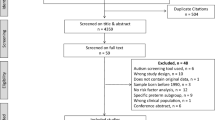Abstract
Pregnancy and delivery complications as indicated in medical records and maternal reports for 23 high-functioning autistic females and 23 high-functioning males of similar IQ and age were compared with those of 54 of their normally developing siblings. Autistic subjects of both sexes had higher non-optimality scores than their siblings. Much of this difference was accounted for by a higher incidence of firstborns and fourth- or later-borns in the autistic group. Of factors found in previous research with mentally handicapped, autistic samples, only estimated weeks of gestation greater than 42 occurred more often in autistic subjects than siblings. The only sex difference specific to the autistic group was that autistic males came from larger families than females. These data provide slight support for the contribution of nonspecific pre- and perinatal factors to other etiological bases of autism. It is proposed that pre- and perinatal factors may play less of a role in autism in high-functioning individuals than suggested in studies of autism associated with severe retardation.
Similar content being viewed by others
References
American Psychiatric Association. (1987).Diagnostic and statistical manual of mental disorders (3rd ed., rev.). Washington, DC: Author.
Bartak, L., Rutter, M., & Cox, A. (1975). A comparative study of infantile autism and specific developmental receptive language disorder: I: The children.British Journal of Psychiatry, 126, 127–145.
Campbell, M., Hardesty, A. S., & Burdock, E. I. (1978). Demographic and perinatal profiles of 105 autistic children: A preliminary report.Psychopharmacology Bulletin, 14(2), 36–39.
DeMyer, M. K. (1979).Parents and children in autism. Washington, DC: Winston.
Deykin, E. Y., & MacMahon, B. (1980). Pregnancy, delivery, and neonatal complications among autistic children.American Journal of Diseases of Children, 134, 860–864.
Finegan, J., & Quarrington, B. (1979). Pre-, peri-, and neonatal factors and infantile autism.Journal of Child Psychology and Psychiatry, 20, 119–128.
Gillberg, C. (1988). The neurobiology of infantile autism.Journal of Child Psycholog and Psychiatry, 29, 257–266.
Gillberg, C., & Gillberg, I. C. (1983). Infantile autism: A total population study of reduced optimality in the pre-, peri-, and neonatal periods.Journal of Autism and Developmental Disorders, 13, 153–166.
Jones, M. B., & Szatmari, P. (1988). Stoppage rules and genetic studies of autism.Journal of Autism and Developmental Disorders, 18, 31–40.
Laxer, G., Rey, M., & Ritvo, E. R. (1988). A comparison of potentially pathologic factors in European children with autism, Down Syndrome, and multiple physical handicaps.Journal of Autism and Developmental Disorders, 18, 308–314.
Le Couteur, A., Rutter, M., Lord, C., Rios, P., Robertson, S., Holdgrafer, M., & McLennan, J. D. (1989). Autism Diagnostic Interview: A standardized investigator-based instrument.Journal of Autism and Developmental Disorders, 19, 363–387.
Levy, S., Zoltak, B., & Saelens, T. (1988). A comparison of obstetrical records of autistic and nonautistic referrals for psychoeducational evaluations.Journal of Autism and Developmental Disorders, 18, 573–582.
Lord, C., Goode, S., Rutter, M., & Schopler, E. (1989). Sex differences in autism.International Journal of Rehabilitation Research, 12, 113.
Lord, C., & Schopler, E. (1985). Differences in sex ratios in autism as a function of measured intelligence.Journal of Autism and Developmental Disorders, 15, 185–193.
Lord, C., & Schopler, E. (1987). Neurobiological implications of sex differences in autism. In E. Schopler & G. Mesibov (Eds.),Neurobiological issues in autism (pp. 191–211). New York: Plenum Press.
Lord, C., Schopler, E., & Revicki, D. (1982). Sex differences in autism.Journal of Autism and Developmental Disorders, 12, 317–330.
Mason-Brothers, A., Ritvo, E. R., Guze, B., Mo, A., Freeman, B. J., Funderburk, S. J., & Schroth, P. C. (1987). Pre-, peri-, and postnatal factors in 181 autistic patients from single and multiple incidence families.Journal of American Academy of Child and Adolescent Psychiatry, 26, 39–42.
Molfese, V. J., & Thomson, B. (1985). Optimality versus complications: Assessing predictive values of perinatal scales.Child Development, 56, 810–823.
Raven, J. C. (1960).Guide to using the standard progressive matrices. London: H. K. Lewis.
Ritvo, E. R., & Freeman, B. J. (1978). Current research on the syndrome of autism.The Journal of American Academy of Child Psychiatry, 17, 505–575.
Sameroff, A. J., Seifer, R., & Zax, M. (1982). Early development of children at risk for emotional disorder.Monographs of the Society for Research in Child Development, 47.
Schopler, E., Reichler, R. J., & Renner, B. R. (1986).The Childhood Autism Rating Scale (CARS) for diagnostic screening and classification of autism. New York: Irvington.
Torrey, E. F., Hersh, S. P., & McCabe, K. (1975). Early childhood psychosis and bleeding during pregnancy.Journal of Autism and Childhood Schizophrenia, 5, 287–297.
Tsai, L. (1987). Pre-, peri-, and neonatal factors in autism. In E. Schopler & G. Mesibov (Eds.),Neurobiological issues in autism (pp. 179–189). New York: Plenum Press.
Tsai, L., & Stewart, M. A. (1983). Etiological implications of maternal age and birth order in infantile autism.Journal of Autism and Developmental Disorders, 13, 57–65.
Tsai, L., Stewart, M. A., & August, G. (1981). Implications of sex differences in the familial transmission of infantile autism.Journal of Autism and Developmental Disorders, 11, 165–173.
Wing, J. K. (Ed.). (1966). Diagnosis, epidemiology and etiology. In J. K. Wing (Ed.),Early childhood autism. London: Pergamon.
Author information
Authors and Affiliations
Rights and permissions
About this article
Cite this article
Lord, C., Mulloy, C., Wendelboe, M. et al. Pre- and perinatal factors in high-functioning females and males with autism. J Autism Dev Disord 21, 197–209 (1991). https://doi.org/10.1007/BF02284760
Issue Date:
DOI: https://doi.org/10.1007/BF02284760




